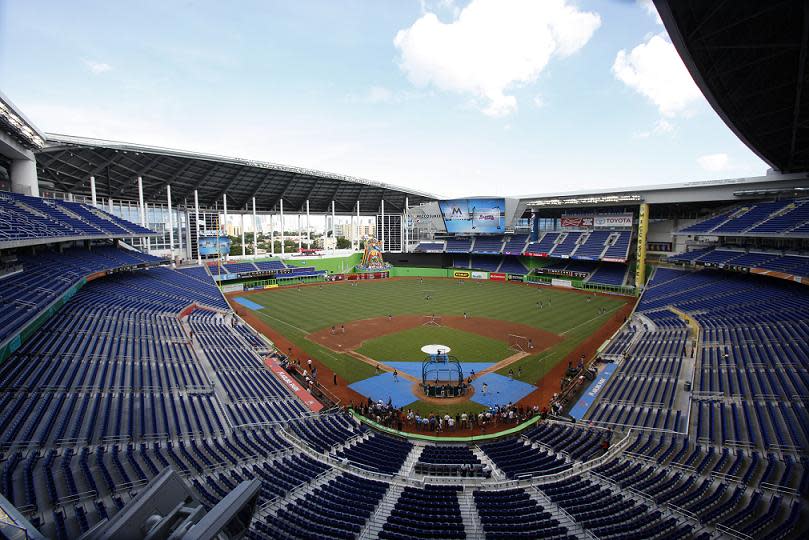How Marlins Park is being prepared for impact of Hurricane Irma

The Miami Marlins are deep into preparations for the potential impact of Hurricane Irma, which could make landfall in south Florida as early as this weekend.
According to the South Florida Sun-Sentinel, Marlins Park is built to withstand a Category 4 storm, which includes winds up to 156 mph. Irma was measured as ‘potentially catastrophic’ Category 5 storm on Wednesday.
[Sign up for Fantasy Football before it’s too late! Draft now for free]
Though hurricane experts expect Irma to weaken in the coming days, it’s still likely to pack a powerful punch that would severely test the $2.4 billion stadium if Miami takes a direct hit.
As updates on the storm’s growth and strength came in on Tuesday, the NFL was quick to postpone Sunday’s scheduled game between the Buccaneers and Dolphins in Miami until November. The Marlins won’t have that exact issue. They will be on the road beginning Thursday in Atlanta, and will remain out of Miami until the road trip concludes next Thursday in Philadelphia.
Still, they want to do their best to ensure the structure remains safe and sound, not only so baseball can be safely played there after the storm, but so it doesn’t cause a danger to the community. Part of their preparation will be to leave sections in the retractable roof open to limit air and wind pressure build up inside the stadium.
Here’s more on that from the Sun-Sentinel report:
[Marlins’ executive vice president Claude] Delorme said the Marlins’ business and ballpark operations people started having daily preparedness meetings Tuesday, setting into motion a plan that will conclude Friday day with the closing of the stadium’s retractable roof.
That roof, however, will be ajar in several spots — a 16-foot gap on the east side, a 10-foot gap in the center and a 10-foot gap on the west side.
“It allows the air and the pressure to come inside the ballpark and eventually leave the ballpark,” Delorme said. “It avoids putting a lot of uplift on the roof. It was designed that way so we wouldn’t get any major damage to our roof.”
The 9,300-pound roof will be tied down with 56 large steel anchors.
“Even with the pressure and the winds, once you lock it in, that roof isn’t moving,” Delorme said.
The roof is the biggest concern because it presents the greatest danger. The Marlins are also taking measures to prevent flooding in and around the ballpark by installing 29 flood gates near its entrances.
At this point, there are no set plans to turn Marlins Park into a shelter for potential hurricane refugees. But it sounds like all sides, including Miami-Dade County, which owns the stadium, are open to making it available should that become necessary.
“The only way the county would ask us is if it was a major catastrophe, a Category 4 or 5 and the city was shut down and they needed to accommodate so many people and were looking for facilities,” Delorme said. “By all means, we would be accommodating.”
More MLB coverage from Yahoo Sports:
– – – – – – –
Mark Townsend is a writer for Big League Stew on Yahoo Sports. Have a tip? Email him at bigleaguestew@yahoo.com or follow him on Twitter!



